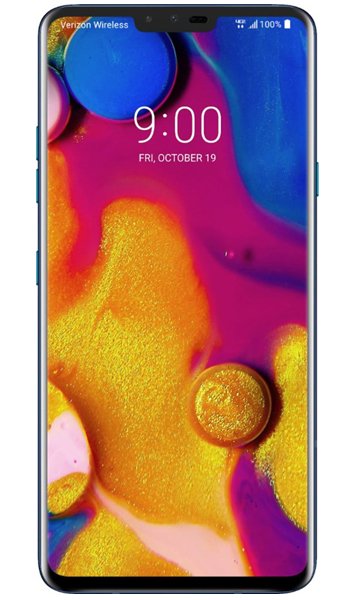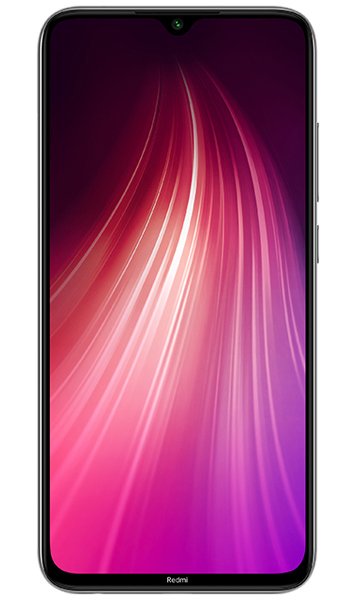LG V40 ThinQ vs Xiaomi Redmi Note 8 Comparison and Differences
Smartphone 1

LG V40 ThinQ
Smartphone 2

Xiaomi Redmi Note 8
Smartphone 3
LG V40 ThinQ or Xiaomi Redmi Note 8 Specs Comparison
or
 Common specs
Common specs
| Brand and model | LG V40 ThinQ | Xiaomi Redmi Note 8 | |
| Rating | (+) | (+) | |
| Release date | 2018, October | 2019, August | |
| Dimensions (HxWxD) | 158.8 x 75.7 x 7.6 mm | 6.25 x 6.25 x 2.98 in | 158.3 x 75.3 x 8.4 mm | 6.23 x 6.23 x 2.96 in | |
| Weight | 169 g | 5.96 oz | 190 g | 6.7 oz | |
| Body Build | Front/back glass (Gorilla Glass 5), aluminum frame | Front/back glass (Gorilla Glass 5) | |
| Case | buy from Amazon | buy from Amazon | |
| Colors | New Platinum Gray, Carmine Red, New Aurora Black, New Moroccan Blue | Neptune Blue, Moonlight White, Space Black | |
| Battery | 3300 mAh, Non-removable Li-Po | 4000 mAh, Non-removable Li-Po | |
| Approximate price | 800 EUR | 175 EUR | |
| Check price | from Amazon | from Amazon |
 Screen
Screen
| Technology | P-OLED | IPS LCD | |
| Touchscreen | capacitive touchscreen | capacitive touchscreen | |
| Display colors | 16M | 16M | |
| Screen size | 6.4" in | 6.3" in | |
| Screen area | 100.5 cm2 | 97.4 cm2 | |
| Screen format | 19.5:9 (height:width) | 19.5:9 (height:width) | |
| Screen to body ratio | 83.6% | 81.7% | |
| Screen resolution | 1440 x 3120 px | 1080 x 2340 px | |
| Screen PPI /points per inch/ | 537 PPI | 409 PPI | |
| Screen protection | Corning Gorilla Glass 5 | Corning Gorilla Glass 5 | |
| Other specs | - Dolby Vision -HDR10 -Always-on display |
||
| Screen protector | buy from Amazon | buy from Amazon |
 Camera and Video
Camera and Video
| Rear camera, main | 12 MP, Triple | 48 MP, Quad | |
| Camera specs | -12 MP, 27mm (standard), f/1.5, 1/2.6'', 1.4µm, 3-axis OIS, dual pixel PDAF -12 MP, 52mm (telephoto), f/2.4, 1.0µm, 2x optical zoom, OIS, PDAF -16 MP, 16mm (ultrawide), f/1.9, 1/3.1'', 1.0µm, no AF |
-48 MP, f/1.8, 26mm (wide), 1/2", 0.8µm, PDAF -8 MP, f/2.2, 13mm (ultrawide), 1/4", 1.12µm -2 MP, f/2.4, 1/5", 1.75µm (dedicated macro camera) -2 MP, f/2.4, 1/5", 1.75µm, depth sensor |
|
| Functions | LED flash, HDR, panorama | LED flash, HDR, panorama | |
| Video | 2160p@30/60fps, 1080p@30/60/240fps, 24-bit/192kHz stereo sound rec., HDR video, gyro-EIS | 2160p@30fps, 1080p@30/60/120fps, gyro-EIS | |
| DxOMark Main Score | 97 | ||
| DxOMark Photo | 101 | ||
| DxOMark Video | 87 | ||
| Front camera, selfie | 8 MP, Dual | 13 MP, Single | |
| Specifications | 8 MP, 26mm (standard), f/1.9, 1.4µm 5 MP, 21mm (wide), f/2.2, 1.4µm |
13 MP, f/2.0, 1.12µm | |
| Functions | HDR | HDR, panorama | |
| Video | 1080p@30fps | 1080p@30fps |
 Performance
Performance
| Operating system - OS | Android 8.1 (Oreo); LG UX 7.1 | Android 9.0 (Pie); MIUI 10 | |
| Chipset | - Qualcomm SDM845 Snapdragon 845 (10 nm) | - Qualcomm SM6125 Snapdragon 665 (11 nm) | |
| CPU | - Octa-core (4x2.7 GHz Kryo 385 Gold & 4x1.7 GHz Kryo 385 Silver) | - Octa-core (4x2.0 GHz Kryo 260 Gold & 4x1.8 GHz Kryo 260 Silver) | |
| GPU | Adreno 630 | Adreno 610 | |
| External memory | microSD, up to 512 GB (dedicated slot) | microSD, up to 256 GB (dedicated slot) | |
| Internal memory | 64/128 GB, 6 GB RAM | 32GB 3GB RAM, 64GB 4GB RAM, 64GB 6GB RAM, 128GB 4GB RAM, 128GB 6GB RAM |
 Benchmark
Benchmark
| Antutu 10 Total | 227941 | ||
| Antutu 10 CPU | 84510 | ||
| Antutu 10 GPU | 34789 | ||
| Antutu 10 Mem | 51208 | ||
| Antutu 10 UX | 84510 | ||
| Antutu 8 Total | 270341 | 173592 | |
| Antutu 7 Total | |||
| GeekBench 6 Single Core | 465 | 323 | |
| GeekBench 6 Multi Core | 1610 | 1062 | |
| GeekBench 6 OpenCL | 1887 | 293 | |
| GeekBench 6 Vulkan | 477 | ||
| GeekBench 5 Single Core | 427 | 309 | |
| GeekBench 5 Multi-Core | 1865 | 1328 | |
| GeekBench 4 Single Core | 2230 | 1499 | |
| GeekBench 4 Multi-Core | 8140 | 5543 | |
| GeekBench 4 RenderScript | 12836 | ||
| GeekBench 4 Battery | 3805 |
 Communication and Connectivity
Communication and Connectivity
| SIM card | Single SIM (Nano-SIM)Dual SIM (Nano-SIM, dual stand-by) | Dual SIM (Nano-SIM, dual stand-by) | |
| Network | GSM / CDMA / HSPA / EVDO / LTE | GSM / HSPA / LTE | |
| Bands | -2G - GSM 850 / 900 / 1800 / 1900 - SIM 1 & SIM 2 (dual-SIM only) CDMA 800 / 1900 - V405QA7 -3G - HSDPA 850 / 900 / 1700(AWS) / 1900 / 2100 - V405QA7 CDMA2000 1xEV-DO - V405QA7 -4G - LTE band 1(2100), 2(1900), 3(1800), 4(1700/2100), 5(850), 7(2600), 8(900), 12(700), 13(700), 14(700), 17(700), 20(800), 25(1900), 26(850), 28(700), 29(700), 30(2300), 38(2600), 39(1900), 40(2300), 41(2500), 46, 66(1700/2100), 71(600) - V405QA7 |
-2G - GSM 850 / 900 / 1800 / 1900 - SIM 1 & SIM 2 -3G - HSDPA 850 / 900 / 1700(AWS) / 1900 / 2100 HSDPA 850 / 900 / 2100 -4G - LTE band 1(2100), 2(1900), 3(1800), 4(1700/2100), 5(850), 7(2600), 8(900), 20(800), 38(2600), 40(2300) LTE band 1(2100), 3(1800), 5(850), 8(900), 38(2600), 40(2300), 41(2500) |
|
| Speed | HSPA 42.2/5.76 Mbps, LTE-A (4CA) Cat16 1024/150 Mbps | HSPA 42.2/11.5 Mbps, LTE-A | |
| GPRS | Yes | Yes | |
| Edge | Yes | Yes | |
| Wi-Fi | Wi-Fi 802.11 a/b/g/n/ac, dual-band, Wi-Fi Direct, DLNA, hotspot | Wi-Fi 802.11 a/b/g/n/ac, dual-band, Wi-Fi Direct, hotspot | |
| GPS | Yes, with A-GPS, GLONASS, GALILEO | Yes, with A-GPS, GLONASS, BDS | |
| NFC | Yes | ||
| USB | 2.0, Type-C 1.0 reversible connector (PowerDelivery 2.0) | 2.0, Type-C 1.0 reversible connector, USB On-The-Go | |
| Bluetooth | 5.0, A2DP, LE, aptX HD | 4.2, A2DP, LE | |
| Harmful irradiation |
SAR - 0.26 W/kg (head) 1.00 W/kg (body) SAR EU - 0.19 W/kg (head) 1.09 W/kg (body) |
 Music and Audio
Music and Audio
| Radio | Stereo FM radio with RDS | FM radio | |
| Headphone jack | Yes | Yes | |
| Others | - 32-bit/192kHz audio -24-bit/48kHz audio recording -Active noise cancellation with dedicated mic -DTS: X Surround Sound -Tuned with Meridian Audio |
 Other features
Other features
| Sensors | - Fingerprint (rear-mounted), accelerometer, gyro, proximity, compass, barometer | - Fingerprint (rear-mounted), accelerometer, gyro, proximity, compass , Infrared port | |
| Other extras |
- Fast battery charging: 50% in 36 min (Quick Charge 3.0) -Fast wireless charging 10W - IP68 dust/water proof (up to 1.5m for 30 mins) -MIL-STD-810G compliant |
- Fast battery charging 18W - Splash protection |
|
| Versions |
- Versions: V405QA7 (USA Unlocked); V405UA (Sprint, AT&T, Verizon); V405TAB (T-Mobile); V405UA0 (U.S. Cellular) |
Reviews and Opinions on LG V40 ThinQ and Xiaomi Redmi Note 8
If you had to recommend one of these phones to a friend, which one would it be and why? Share your arguments using the Add Opinion button!
